How to save gas when heating a private house: an overview of the best ways to save gas
Due to the considerable tariffs for the services of gas supplying companies, economical gas consumption is a sore spot for most families living in a gas-heated house. Amounts in gas bills, especially in winter, can be simply unrealistic, can they? Have you thought about how to save gas in a private house without sacrificing a comfortable microclimate?
We will try to help you with the solution of this issue - in this material we will talk about real ways of saving that have been tested by many consumers in practice. We also consider alternative heat sources that can supplement or completely replace gas in a private house.
The content of the article:
- Effective Gas Saving Options
- Method # 1 - installing a gas meter
- Method # 2 - reduce heat loss
- Method # 3 - automation of the heating process
- Method # 4 - replacing inefficient equipment
- Method # 5 - modernization of the ventilation system
- Method # 6 - using alternative sources
- Method # 7 - arranging a warm floor
- Method # 8 - optimizing the cost of heating water
- Additional Savings
- Conclusions and useful video on the topic
Effective Gas Saving Options
The issue of economical gas consumption must be approached comprehensively. Plus, it’s important to use only legal “white” methods in order not to have unnecessary troubles with regulatory authorities. Consider the most effective ways to make rational use and save gas, tested by more than one consumer using gas equipment for heating a house.
Method # 1 - installing a gas meter
Let's start with the banal. The first thing to do is install a gas meter in the house, if one is not already available. Without this device, all other actions are meaningless: the gas flow will be calculated according to average standards, which is obviously disadvantageous. The meter will only allow you to pay for the actually consumed blue fuel, and this amount is usually an order of magnitude less.
There are such types of flow meters:
- rotary;
- turbine;
- membrane;
- vortex.
The required size is determined depending on the maximum fuel consumption by all devices in total.You can see the approximate gas consumption per hour in the technical data sheet of the equipment. At choosing a counter should be guided by the number of operated gas appliances in the house

Each meter has its own nominal throughput, marked with a special marking:
- G1.6 allow 1.6-2.5 m³ of energy carrier;
- G2,5 - 2.5-4 m³;
- G4 - 4-6 m³;
- G6 - 6-10 m³;
- G10 - 10-16 m³.
If the house has a gas stove, water heater and boiler, you must choose a device labeled G6 or G10.
Before using other methods, you need to start monitoring costs and regularly recording meter readings in a separate notebook. These notes will help control fuel consumption and evaluate the effectiveness of gas saving attempts when heating a private home.
Method # 2 - reduce heat loss
The second and main step, which will significantly reduce consumption - analysis and reduction of heat loss.
This need is due to the fact that part of the heat in the house leaves through the walls, roof and windows. A certain amount of thermal energy is lost through the ventilation system along with the exhaust air.

In order to eliminate such a problem, it is necessary to carry out a set of measures for thermal insulation.
You need to insulate all surfaces that can transmit heat:
- floor;
- walls;
- ceiling;
- a roof;
- facade;
- doors
- window.
Simplest option insulation of external walls - foam sheathing. You can also make a false wall in the room by laying mineral wool for it. The ceiling is insulated from the attic by the same materials - mineral wool, polystyrene foam or polystyrene foam.
To isolate the floor, the material is laid under a screed or wooden flooring. As a heater, ordinary sawdust, ecowool, mineral wool, polyurethane foam, penofol are suitable.
Roof sandwich panels will help prevent heat leakage through the roof. They consist of an external cladding in the form of two profiled sheets of metal and a thermal insulation layer 10-15 cm thick glued together by cold or hot pressing.
If it is not possible to insulate the house from the inside, we recommend that you read external insulation technologies.
It is more expedient to replace old wooden windows with metal-plastic constructions with double or triple double-glazed windows. Window systems with multi-contour sealing and specially coated glasses keep heat perfectly.
Entrance doors should also have good energy-saving characteristics. The ideal option is a double model with a vestibule. If the purchase of energy-efficient windows and doors is not possible, the old structures should be sealed, carefully sealing all the cracks.

It is important to pay attention to the ventilation rules. It is advisable to ventilate the rooms with open windows for no more than 5-10 minutes. During this time, a sufficient amount of fresh air will enter the room and a lot of heat will not evaporate. If necessary, you can repeat the event once every few hours.
To determine the places of greatest heat loss, a thermal study of the house is carried out. This is done by professionals. By performing an accurate analysis, they provide a detailed map of the heat loss in a particular house.
Warming requires significant financial investments, but this is one of the most effective methods of saving energy.With high-quality performance of work and maximum protection of surfaces from cold air, heating costs can be reduced by up to 50%. An additional bonus will be the noise insulation of the premises, which is especially important if the house is located near a busy highway or roads.
Method # 3 - automation of the heating process
The temperature in the house depends on weather conditions, type and area of the room. According to studies, an indicator that is comfortable for humans is not higher than 21 ° C. The boiler automation system will prevent excessive hypothermia or overheating of the room.
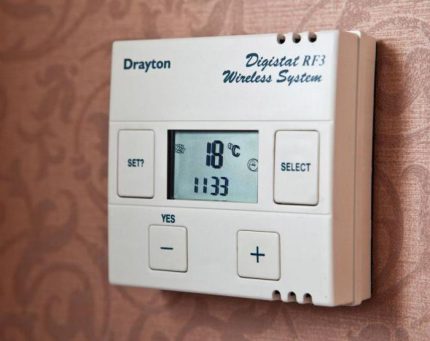
Devices included in its composition regulate the fuel supply, maintaining a stable temperature, taking into account changes in external factors.
These include:
- Weather Sensors. Installed outside the house. They monitor the temperature of the street air and, with any changes, send a signal to the regulatory system about the need to increase or decrease the fuel supply in the gas boiler.
- Indoor thermostats. The air temperature in the room is recorded, monitoring the level of heating of the coolant in the radiator. When the set points are reached, the boiler switches off, and after falling by 1-2 ° C it switches on again.
- Programmers. Allows you to set the desired temperature in the premises by the hour, time of day, day of the week. With their help, you can program the work on a convenient schedule. For example, in the period from 8.00 to 16.00, while no one is home, set one indicator, in the evening from 16.00 to 22.00 - another, at night from 22.00 to 8.00 - the third.
Devices are installed on the wall near the gas supply source or directly on the heating radiator.
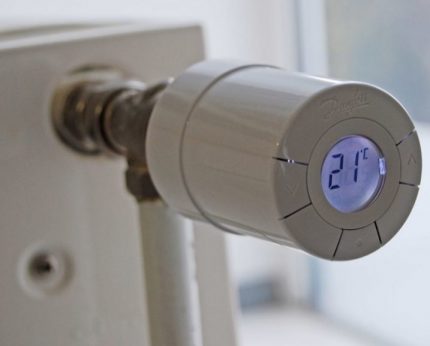
Installing thermostats is one of the easiest ways to save gas. Interacting with the coolant supply source, these devices contribute to a more rational use of the resource. The level of fuel consumption by equipment with an automation system is reduced from 10 to 20%.
Method # 4 - replacing inefficient equipment
Gas consumption is largely determined Efficiency and the efficiency of the main heat source. Therefore, if an old boiler or an unfavorable model that consumes an excessive amount of fuel is installed in the house, it is best to replace such equipment with more energy-efficient ones. This is especially true of Soviet boilers, the efficiency of which barely reaches 60%.
On how to approach the choice of the boiler, it depends on whether the gas consumption in the house will decrease. The unit must completely burn the fuel, generating the maximum amount of heat.
When buying, you need to consider:
- value of efficiency;
- burner and heat exchanger design;
- flue gas temperature;
- thermal insulation thickness;
- type of allocation;
- the cost of the device.
Do not flatter yourself with cheap models: 1-2-stage design of their burners can limit the amount of heat generated. Devices with modular burners equipped with an electronic control system show greater efficiency.
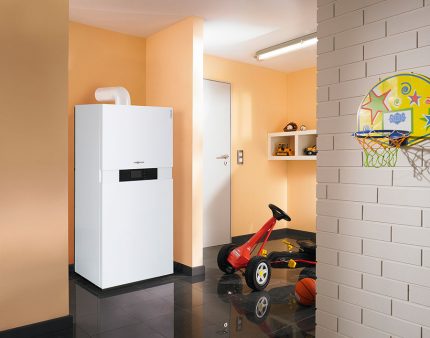
Among modern models, the leader in economy are considered condensing gas boilers floor and wall type with efficiency up to 96%.
Compared to other types of gas equipment, they save up to 20% of fuel.To obtain additional heat, high-tech devices use exhaust gases.

In addition to choosing an economical boiler model, it is necessary to pay special attention to the installation scheme of the heating system in the house. It is important to accurately calculate the optimal power of the equipment (1 kW of energy should fall on 10 m² of heated area), select the correct pipe routing system for distributing the coolant.
Method # 5 - modernization of the ventilation system
Another effective way to save money - installation forced-air and exhaust installations with recovery. These devices effectively remove exhaust air masses and return heat to the room, allowing you to optimize the fuel consumption necessary for heating.
Here's how to reduce gas consumption with a recovery system:
- heat exchangers are mounted in the inlet vents, which divert the moist and warm air masses out;
- recuperator heat exchangers are connected to the ventilation inlet pipes;
- as the warm air moves, the recuperators warm the cold streams going outside;
- fresh air enters the room in a slightly warmed form.
In this way, recovery system maintains natural air exchange, maintains an optimal temperature and humidity regime, does not release excess heat into the pipe. By reducing heat loss, less energy is required to maintain a normal indoor climate.
Method # 6 - using alternative sources
Alternatively, go a more radical way and abandon the use of gas in favor of more economical alternative sources of heating.

Let us consider in more detail the optimal alternative sources of heat.
Natural energy of the sun
Recently, instead of the usual systems for arranging home heating, solar panels or collectors have often been used. In the operation of such devices is involved energy of sun - The natural and most environmentally friendly form of energy.
System solar heating consists of vacuum manifold, the pump, the controller, battery tank for hot water. With the help of collectors installed on the roof, the energy of the sun is converted into electricity, accumulated in batteries and heats water, which reaches 70 ° C and circulates through the system.

The effectiveness of this heating method is directly proportional to the number of sunny days and the intensity of sunlight. With proper organization, such heating helps to significantly save on the main heating system of the house. For this, elements of the solar system must be integrated into the traditional scheme.
High Efficiency Heat Pumps
One of the most economical types of heating is heat pump systems. Installation of such devices is expensive, but after a certain time a significant economic effect will be noticeable.
Compared to gas boilers, the cost of heat generated by pumps is 2.5 times less. Using only 1 kW of electricity, the heat pump produces an average of 3-5 kW of thermal energy.
There are different types of heat pumps that differ in the type of heat source used:
- water - pumps take heat from underground, surface waters, the earth;
- air - the ambient temperature is used;
- land - they take renewable heat of the earth, the system is mounted below the freezing level;
- derivative (secondary heat) - for example, the heat of a central heating pipeline.
The equipment is able to provide complete heating and hot water supply at home. In addition, the units can air-condition the premises in the summer.
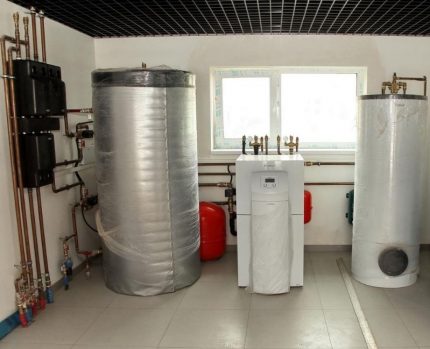
If there are frequent power outages in the area, you should not install heat pumps, because they need electricity to operate the compressor.
Method # 7 - arranging a warm floor
Underfloor heating systems are highly efficient and economical. They are used both as the main and additional heat source in a private house, including when heating with a gas boiler.

Warm floor may be water, electric or infrared. To choose the right The best option for a warm floor should take into account a number of criteria, among which, including, the features of the room and the type of flooring.
It consists of several layers forming a “pie” of the following elements:
- base surface;
- a layer of waterproofing and heat insulating coating;
- pipe and communications system;
- fixing concrete mortar;
- flooring.
The device evenly distributes heat throughout the area and provides a comfortable microclimate in the room. Due to the absence of convective flows, the amount of dust in the air is significantly reduced.
Method # 8 - optimizing the cost of heating water
In addition to heating, gas is used in most private homes to provide hot water. To reduce overall costs, you need to reduce the amount of resources used in this direction.
In this case, you can use one of several effective methods. The first option is to connect a separate gas flow type heater. It allows you not to waste gas, as it only works when the hot water valve is opened.
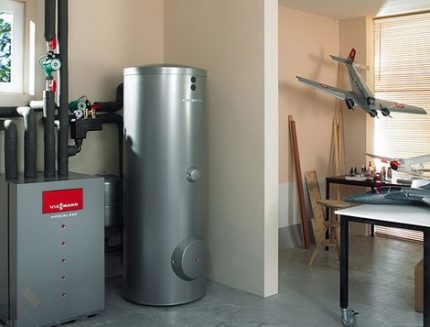
The second option is to install indirect heating boiler in one circuit with a heating system or use solar collectors for water supply. If you use different methods in combination, the cost of paying for gas can decrease by 20-25%.
Additional Savings
In addition to the methods discussed above, there are several more related tricks, using which it is possible to achieve the desired savings.
The following rules should be followed:
- Do not cover radiators with decorative panels, blackout curtains, furniture, clothes;
- at least once a year, it is necessary to clean the boiler heat exchanger of accumulated dirt and dust;
- if the equipment is installed in an unheated room, it is recommended to perform high-quality insulation of the boiler, boiler and outgoing pipes;
- between the radiator and the wall it is advisable to install special energy-reflecting screens made of aluminum foil;
- when using gas to heat water, it is worthwhile to install economical shower heads;
- if the geyser does not work, the burner should not be in an active state.
Before the start of the heating season, every time you need to check the system and eliminate all identified deficiencies. Common problems include air jams, leaks at the junction of structural parts.
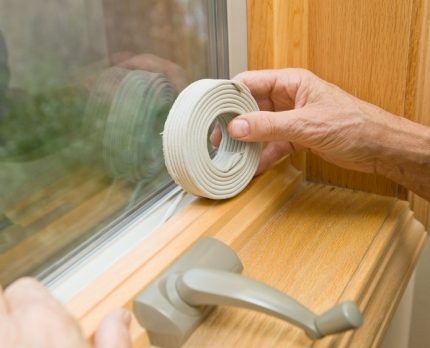
Savings should be economical, so it is important to control gas consumption everywhere, including in the kitchen. During cooking on the stove, the flame should be regulated at each stage of cooking, at the right time reducing the intensity of combustion.
For faster cooking and less gas consumption, it is recommended to cover the dishes with a lid, use special pots with grooves at the bottom, and teapots with a whistle.
Conclusions and useful video on the topic
Life hacks of consumers to reduce the cost of heating a private house up to 60%:
Advantages of using a thermostat, features of connecting to a gas boiler:
Overview of alternative heat sources:
A universal solution for saving gas does not exist. It is necessary to experiment, apply different methods and evaluate their effectiveness, comparing previous counter indicators with current ones. The implementation of the proposed options provides for a whole range of work, sometimes expensive and time-consuming. But it’s worth it, since much lower numbers in payments will soon return on investment.
According to experts, thermal insulation of a house provides up to 40% gas savings, installation of thermostats and a programmer - up to 10-20%, installation of a quality boiler - up to 20%. By combining several methods, you can achieve significant results and later save a considerable amount of money on heating.
What saving methods do you use? Share your secrets of low gas consumption with other visitors to our site in the comments section.
If you still have questions after reading this publication, or you can not figure out the intricacies of implementing one of the considered methods of saving, ask our experts for advice - the feedback form is located below.

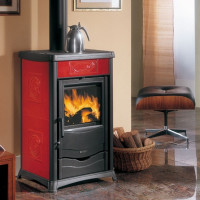 Autonomous gas heating of a private house: device options and an overview of the best solutions
Autonomous gas heating of a private house: device options and an overview of the best solutions 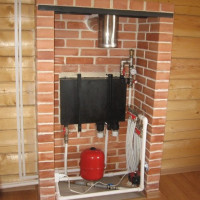 How to arrange heating a private house without gas: the organization of the system in a wooden building
How to arrange heating a private house without gas: the organization of the system in a wooden building 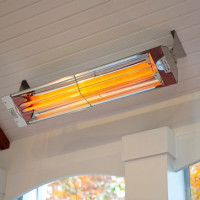 Infrared heating of a private house: an overview of modern infrared heating systems
Infrared heating of a private house: an overview of modern infrared heating systems  Electric heating in a private house: an overview of the best types of electric heating systems
Electric heating in a private house: an overview of the best types of electric heating systems 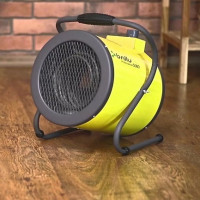 Types of heat guns + an overview of the proposals of leading manufacturers
Types of heat guns + an overview of the proposals of leading manufacturers  Circulation pump for heating: top ten models and tips for customers
Circulation pump for heating: top ten models and tips for customers  How much does it cost to connect gas to a private house: the price of organizing gas supply
How much does it cost to connect gas to a private house: the price of organizing gas supply  The best washing machines with dryer: model rating and customer tips
The best washing machines with dryer: model rating and customer tips  What is the color temperature of light and the nuances of choosing the temperature of the lamps to suit your needs
What is the color temperature of light and the nuances of choosing the temperature of the lamps to suit your needs  Replacement of a geyser in an apartment: replacement paperwork + basic norms and requirements
Replacement of a geyser in an apartment: replacement paperwork + basic norms and requirements
As I thought, the most savings from reducing heat loss, read home insulation. The only problem is that first you need to spend a lot of money on the insulation itself.
Of course, you will have to spend money on insulation, but if you approach this process constructively, you can significantly reduce costs! Firstly, I advise you to buy a thermal imager, the device costs about $ 200. Yes, a lot, but in the future it will come in handy. With it, you can see the areas of the house through which the greatest heat loss occurs.
If the budget is limited, then only the most problematic areas can be insulated before winter. As for the thermostat, the correct advice in the article is that I have a gas boiler, water underfloor heating and air conditioning connected to a thermostat.He maintains a stable temperature of 23 degrees in the house all year round. Of course, there are exceptions, for example, if we leave in the winter, then I will set 18 degrees to save, because there is no one at home. You can also separately install thermostats on the radiators in the rooms.